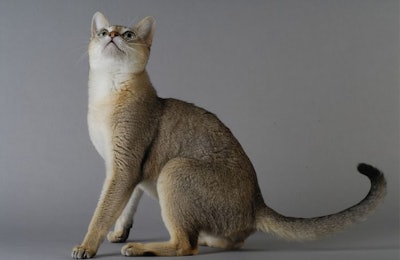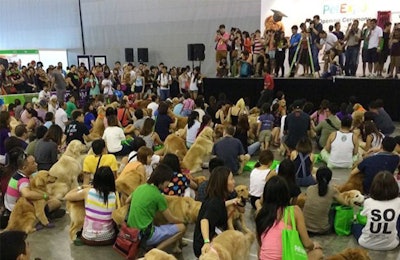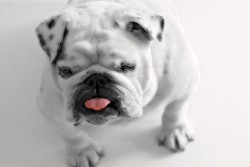
Singapore, the second-smallest country in Southeast Asia but one of the wealthiest trade-driven economies in the region, has serious pet issues that make it challenging for the Asian country's pet food market.
Its Housing Development Board (HDB) has an ongoing ban on cats in all its high-rise buildings, where about 80% of its 5.9 million citizens, permanent residents and non-residents live. Dog ownership among HDB residents is also regulated by the state, and each unit can only have one small dog. This means only the 20% or so of Singaporeans who live in private condominiums and apartments, and those who have land properties or own houses and lots, can have cats and more than one dog of any breed they want.
No cats allowed
The ban on cats in HDB flats has been in place since 1989, so it has been 30 years now that cat lovers in these government-built apartments have been contesting the rule to no avail.
The reason for the ban is open to much debate. On its website, the housing board stated its case against cats for being “generally difficult to contain within the flat. When allowed to roam indiscriminately, they tend to shed fur and defecate or urinate in public areas and also make caterwauling sounds, which can inconvenience your neighbors.” The rule is arguably lopsided, so there's some consolation that it is not being strictly implemented unless someone reports the presence of a cat. Nevertheless, the ban has made it difficult to have an official count of pet cats in the entire city-state as many HDB occupants are secretly keeping the felines in their subsidized apartments and are not putting microchips on them.
In 2010, market research firm Euromonitor estimated Singapore's total pet population at 789,000 of which only 48,000 were believed to be cats. In 2016, it slightly increased its estimate to 824,600 pets with 51,500 of them cats.
Although the decades-old ban has not yet turned Singapore into a total cat-less society, it seems to have directly contributed to the country's low cat ownership (29%) when compared to the number of pet dogs (48%) in Singapore homes. As of 2018, Singapore is made up of 1.3 million households.
Some see the government cat ban as ironic for a country known as the Lion City and home to a very special breed of small cat called the Singapura. But aside from its impact on the feline population and pet abandonment when authorities order cats evicted, the ban risks stifling the growth of the multi-million-dollar cat food business.
One dog only
One of the most popular dog breeds in Singapore is the Golden Retriever. Many also own native dogs. Neither type of dog, however, is allowed in HDBs.

The Golden Retriever is one of Singapore’s most popular dog breeds — however, it is not a breed allowed under the Housing Development Board’s strict dog size restrictions. | Photo by Alma Buelva
Because of space limitations, only one dog is permitted in every apartment and it must be any of the 62 small breeds or their crosses that the housing agency has identified and listed on its website. Ideally, a pet dog for an HDB tenant should measure only up to 40 cm at the shoulders and should weigh 10 kg or less.
In 2011, the board relaxed its one-dog policy to accommodate larger dogs in HDBs if they were adopted from accredited shelters. But HDB residents with dogs not among the approved breeds can be fined a maximum of S$4,000 (US$2,905). Since 2017, all pet dogs are strictly required to be micro-chipped once and registered annually. Failure to comply with this rule could mean a hefty S$5,000 (US$3,632) fine.
Singapore's dog food market could be much larger if the one (small) dog rule is lifted. While the limit creates a definite market for dog food for small dogs, overall demand from these small eaters would be, at best, steady but slow.
Multiple pet food market challenges
Aside from pet ownership restrictions imposed by the HDB, Singapore's pet industry is regulated by the newly founded statutory board Singapore Food Agency (SFA) and the Animal & Veterinary Service (AVS) under the National Parks Board (Nparks).
The board sees to it that businesses engaged in pet grooming, pet sitting, pet boarding, pet breeding and pet retailing follow the minimum standards and best practices listed in a 40-page Code of Animal Welfare that covers everything from housing, diet, food preparation, disease prevention and waste disposal to security and recreation.
What Singapore doesn't have, however, is production of packaged pet foods for retail. With no agricultural sector, Singapore is almost entirely dependent on imports for its food requirements, including pet foods. A 2018 report from the U.S. Department of Agriculture (USDA) Foreign Agricultural Service showed net imports of dog and cat food to Singapore at US$40.2 million in 2017, with most products coming from Thailand (32%), USA (27%), Canada (8%) and Australia (7%). In terms of brand, the market is dominated by Mars Petcare’s Pedigree, Cesar and Royal Canin and Nestlé’s Purina and Hill’s Science Diet.
As a whole, Singapore’s pet food market generated revenues of US$102 million in 2018 and is expected to reach US$107 million in 2019. Singapore-based market analyst Craft Driven forecasts the pet industry's market volume to grow annually by 4.3% until 2021, while global market statistics firm Statista expects it to grow 2.8% annually from 2019 to 2023. Dog food dominates, accounting for 52% of the total pet food sales.
Singapore's cat population leaves much to be desired, but it still carves the nation's second-biggest market for pet food with a yearly 1.4% growth rate. Dog food market share leads with 2.5% annual growth. Together, cat food and dog food represent over 85% of Singapore's pet food retail market.
Unfortunately, the brutal U.S.-China trade war could still change these numbers for the worse. At a regional outlook event organized by the Asia Pacific Economic Cooperation (APEC) secretariat, Ho Meng Kit, chief executive officer of the Singapore Business Federation, raised the need to adjust growth expectations.
“Most economists in Singapore are focusing between zero and 1% growth this year,” Ho said and warned neighboring economies that are also export-dependent that “the situation going forward does not look good for APEC.”
Trade war aside, pets still need to eat. In general, Singaporeans prefer to stock up on easier-to-store dry pet food than the wet varieties, and most buy their pet food supplies from home stores and pet shops and not so much from supermarkets.
Singapore pet owners still want the best
The fact that the environment in Singapore poses some challenges to pet ownership is probably one reason pet owners seek out the best, albeit more expensive, food for their pets. With a median monthly salary of S$3,900 (US$2,808), Singaporean pet owners can afford to splurge on premium, breed- and age-specific pet food as well as those formulas that address particular health concerns.
This buying behavior was on full display at the recent Singapore Pet Expo 2019, which attracted 9,000 pet visitors. Show organizers said sales of human-grade pet food and grain- and gluten-free options were well received by pet lovers. They also noticed that more pet owners are now carefully reading pet food labels, an indication of consumers' increased awareness of and desire to provide proper pet care.

















